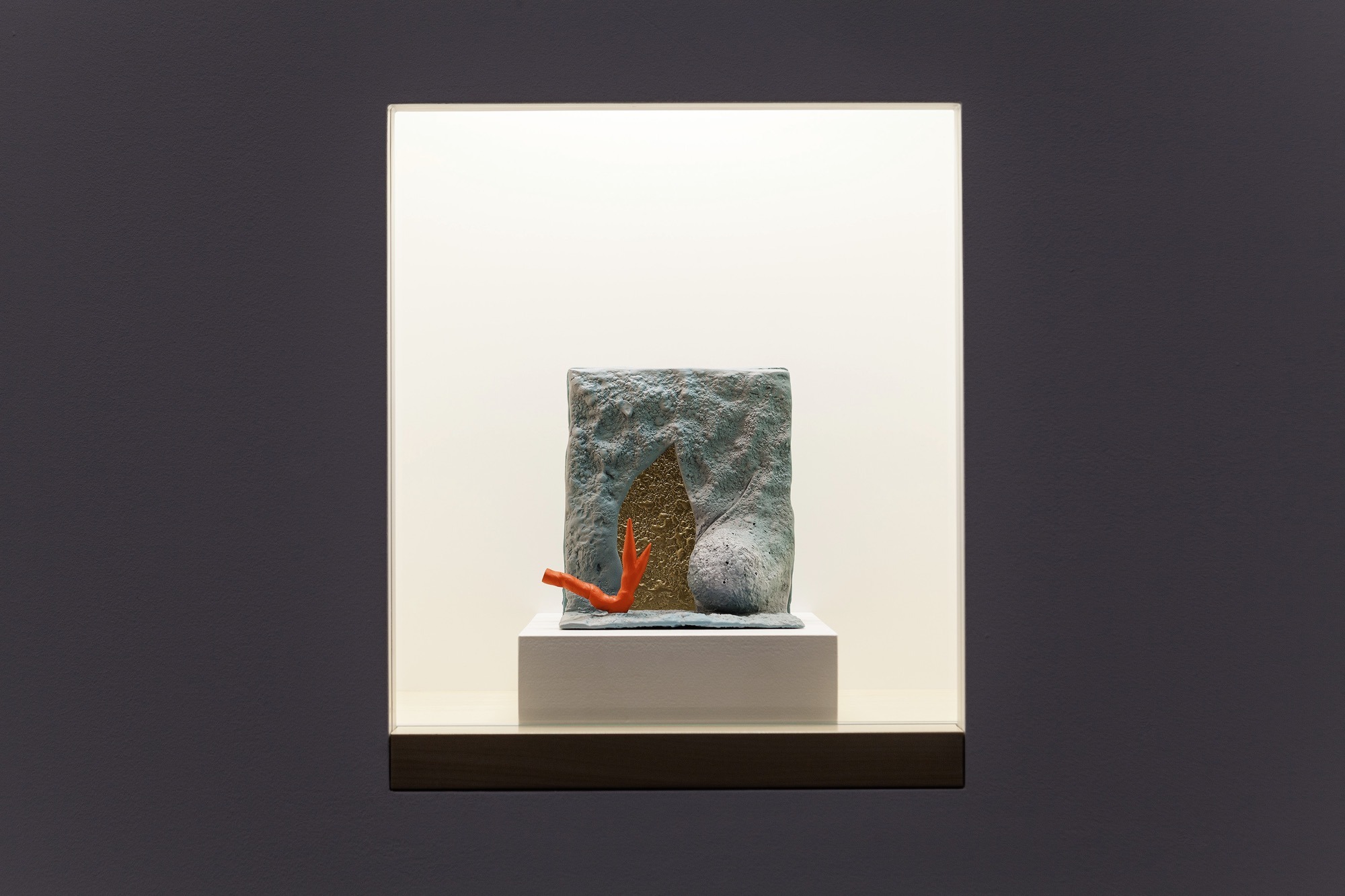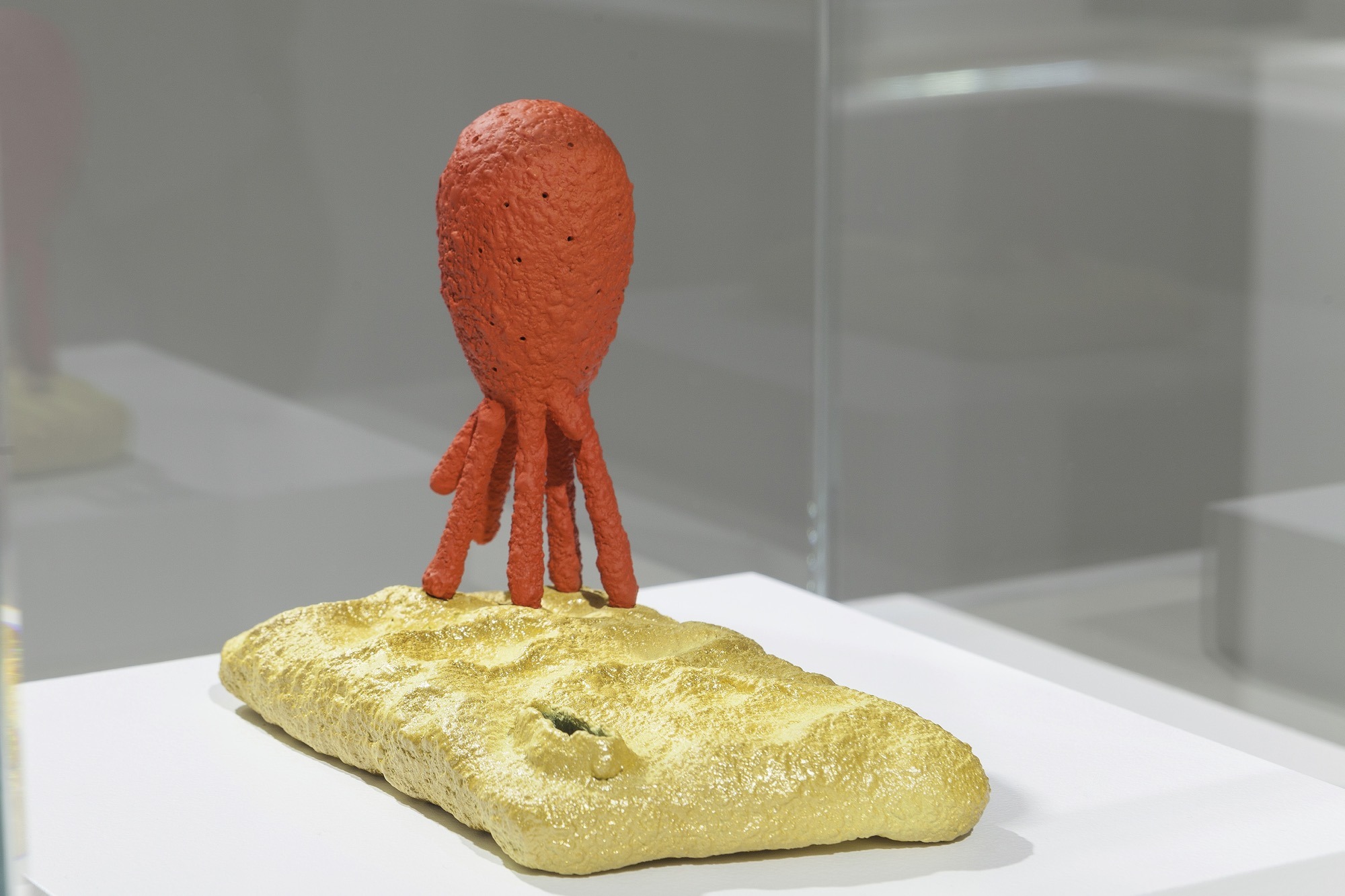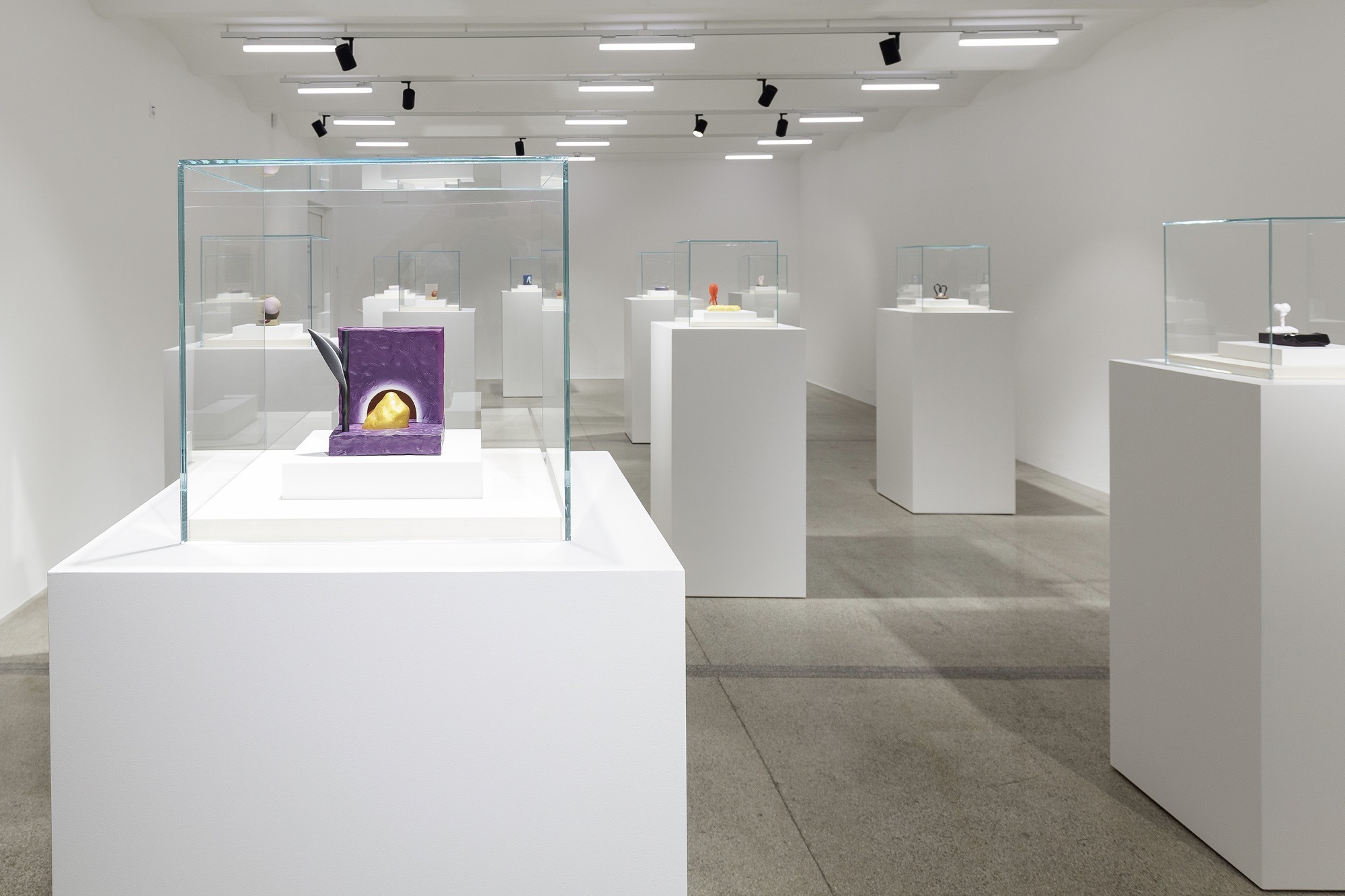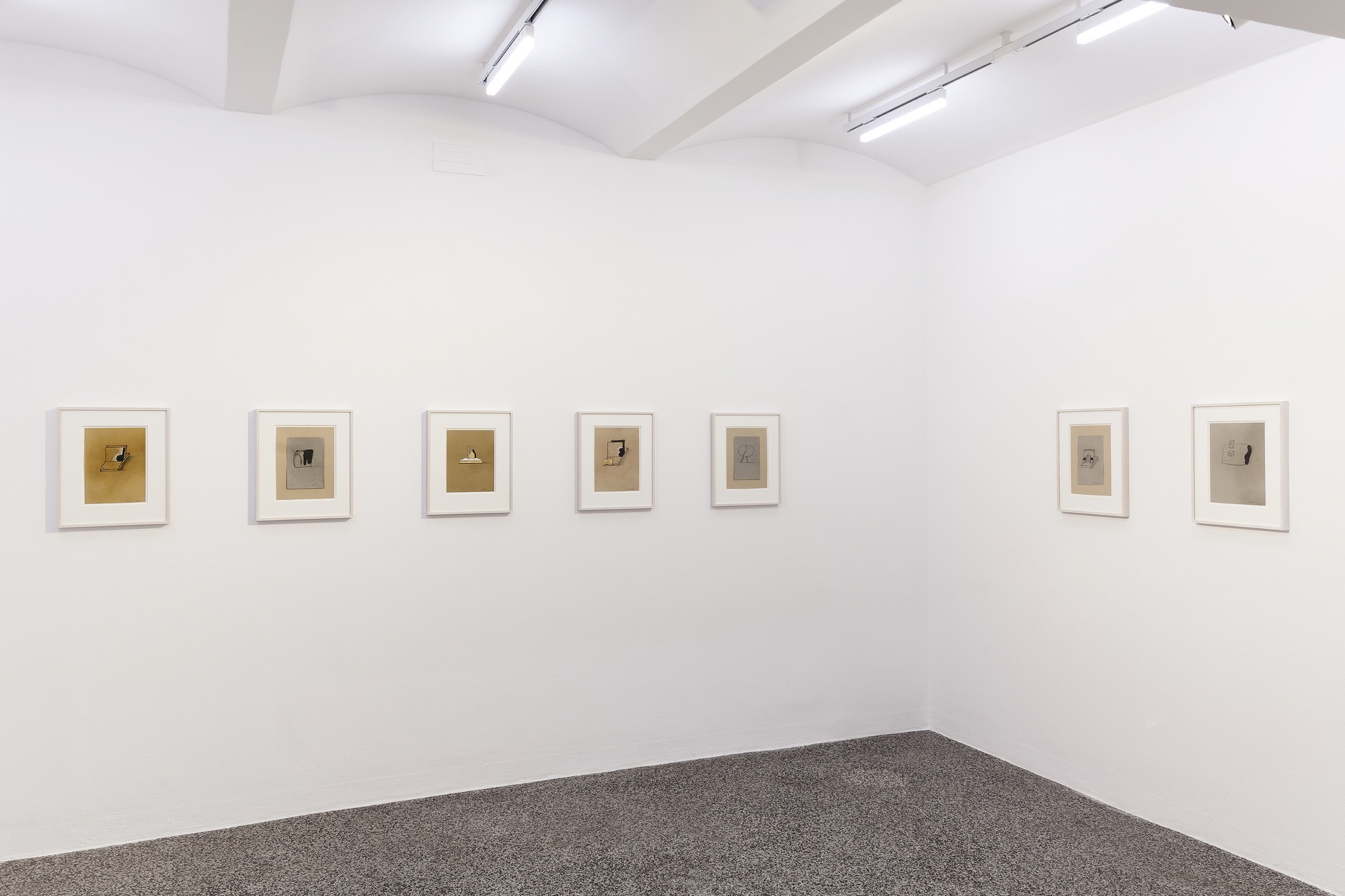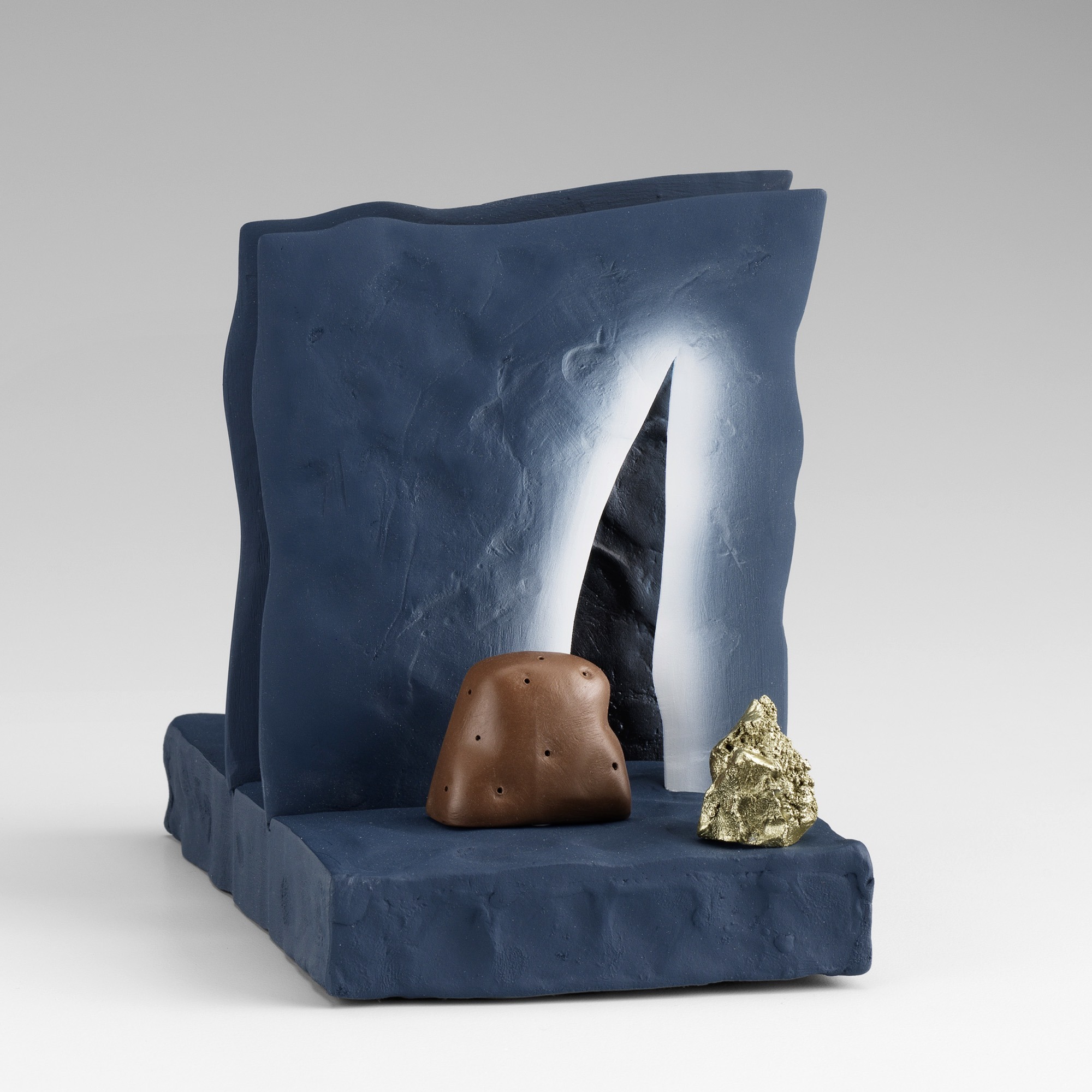Ron Nagle
Nocturn Around
23 Nov 2019 - 09 Feb 2020
RON NAGLE
Nocturn Around
23 November 2019 – 9 February 2020
In the Secession, the San Francisco-based artist presents a selection of 25 sculptures and drawings from recent years.
For the past six decades or so, Ron Nagle has been pursuing parallel careers as a sculptor and musician. His small-format ceramic sculptures are simultaneously miniature landscapes, abstract compositions, thoughts turned into form, and visual jokes – Nagle’s humor and his penchant for puns and wordplay find expression not only in his song texts, but also in the titles of his sculptures. Thus the artist turns phrases such as “finishing touch” into titles such as “Finishing Touchéz” – although Nagle always emphasizes that his titles bear no relationship, in terms of content, to his objects, and should not be regarded as keys to the understanding of his works.
In addition to their miniature format, the artist’s works are characterized by structure, form, color and the equally significant and recurring aspect of surface modeling. Since the 1950s Nagle has been consistently working to redefine clay as an artistic material. His own development is closely interrelated with a movement dating from this period, now known as the California Clay Movement, which has a particular focus on the revaluation and establishment of ceramic materials as fully valid artistic media. His works display many influences from European and American painting, Japanese Momoyama Period ceramics, and even hot rod culture.
Nagle’s sculptures – which are rarely greater than 15 cm in height, and are visually striking in their bright coloration – are objects with a high degree of perfection that raise questions not only about their presentation but also about their method of production. The surface finishing and the achievement of certain effects are central to the artist’s efforts. A characteristic motif is a thick, shining, dripping mass that seems to be frozen in the process of melting. Color contrasts, or rather, layers of paint with contrasting colors that look as if one color has been deposited like a layer of dust over the one beneath it, are evidence of Nagle’s mischievous sense of humor, which manifests itself not least in the humorous and punning titles mentioned above.
Over the years the artist has increasingly expanded his technical range to include other materials, with the primary aim of achieving the effects he desires. Once he has decided on a specific surface design or choice of color, he chooses the material that is most suited to the achievement of that effect. Hence his sculptures consist not just of clay, but also other materials such as artificial resins or plastics. His refined and sophisticated color palette and the brightness of his colors are characteristic elements of his work. These are achieved by working with an airbrush and an elaborate painting and polishing procedure involving multiple layers of paint, as well as the use of high-quality automobile paint (which also explains the link to hot rods, those remodeled and souped-up old-timers with their flawless paint jobs and often eye-catching color effects).
Sketches – often absentmindedly and casually drawn during other activities – always form the starting point for the creation of Nagle’s objects. The connection with the drawing remains strong in the finished work and in many cases the objects oscillate between their status as sculpture and that of a picture. This becomes especially evident when Nagle enforces a viewing position for his objects by presenting them in wall-mounted showcases, thus determining a clearly defined front face and preferential viewpoint – something that is more characteristic of a two-dimensional picture. This form of presentation is also reminiscent of a stage that the audience can usually only see from one perspective, i.e. from the front.
The consistency with which Nagle has been working and improving on his small-format ceramic objects for over 60 years is itself fascinating, as is the way in which his experimentation and innovative spirit has led him to discover many other materials for his own artistic praxis. His earliest beginnings were influenced by artists such as Peter Voulkos, whose objectless large-format sculptures, which were oriented towards American abstract expressionism, revolutionized the perception of clay as an artistic medium. This development was also significantly influenced by the expansion of art colleges, the creation of independent ceramics departments and the appointment of visionary professors, some of whom introduced influences and technical developments from other cultural spheres, such as Maija Grotell, an artist who had emigrated from Finland to the USA, or Toshiko Takaezu, an artist with Japanese roots.
In cooperation with Fridericianum, Kassel
Nocturn Around
23 November 2019 – 9 February 2020
In the Secession, the San Francisco-based artist presents a selection of 25 sculptures and drawings from recent years.
For the past six decades or so, Ron Nagle has been pursuing parallel careers as a sculptor and musician. His small-format ceramic sculptures are simultaneously miniature landscapes, abstract compositions, thoughts turned into form, and visual jokes – Nagle’s humor and his penchant for puns and wordplay find expression not only in his song texts, but also in the titles of his sculptures. Thus the artist turns phrases such as “finishing touch” into titles such as “Finishing Touchéz” – although Nagle always emphasizes that his titles bear no relationship, in terms of content, to his objects, and should not be regarded as keys to the understanding of his works.
In addition to their miniature format, the artist’s works are characterized by structure, form, color and the equally significant and recurring aspect of surface modeling. Since the 1950s Nagle has been consistently working to redefine clay as an artistic material. His own development is closely interrelated with a movement dating from this period, now known as the California Clay Movement, which has a particular focus on the revaluation and establishment of ceramic materials as fully valid artistic media. His works display many influences from European and American painting, Japanese Momoyama Period ceramics, and even hot rod culture.
Nagle’s sculptures – which are rarely greater than 15 cm in height, and are visually striking in their bright coloration – are objects with a high degree of perfection that raise questions not only about their presentation but also about their method of production. The surface finishing and the achievement of certain effects are central to the artist’s efforts. A characteristic motif is a thick, shining, dripping mass that seems to be frozen in the process of melting. Color contrasts, or rather, layers of paint with contrasting colors that look as if one color has been deposited like a layer of dust over the one beneath it, are evidence of Nagle’s mischievous sense of humor, which manifests itself not least in the humorous and punning titles mentioned above.
Over the years the artist has increasingly expanded his technical range to include other materials, with the primary aim of achieving the effects he desires. Once he has decided on a specific surface design or choice of color, he chooses the material that is most suited to the achievement of that effect. Hence his sculptures consist not just of clay, but also other materials such as artificial resins or plastics. His refined and sophisticated color palette and the brightness of his colors are characteristic elements of his work. These are achieved by working with an airbrush and an elaborate painting and polishing procedure involving multiple layers of paint, as well as the use of high-quality automobile paint (which also explains the link to hot rods, those remodeled and souped-up old-timers with their flawless paint jobs and often eye-catching color effects).
Sketches – often absentmindedly and casually drawn during other activities – always form the starting point for the creation of Nagle’s objects. The connection with the drawing remains strong in the finished work and in many cases the objects oscillate between their status as sculpture and that of a picture. This becomes especially evident when Nagle enforces a viewing position for his objects by presenting them in wall-mounted showcases, thus determining a clearly defined front face and preferential viewpoint – something that is more characteristic of a two-dimensional picture. This form of presentation is also reminiscent of a stage that the audience can usually only see from one perspective, i.e. from the front.
The consistency with which Nagle has been working and improving on his small-format ceramic objects for over 60 years is itself fascinating, as is the way in which his experimentation and innovative spirit has led him to discover many other materials for his own artistic praxis. His earliest beginnings were influenced by artists such as Peter Voulkos, whose objectless large-format sculptures, which were oriented towards American abstract expressionism, revolutionized the perception of clay as an artistic medium. This development was also significantly influenced by the expansion of art colleges, the creation of independent ceramics departments and the appointment of visionary professors, some of whom introduced influences and technical developments from other cultural spheres, such as Maija Grotell, an artist who had emigrated from Finland to the USA, or Toshiko Takaezu, an artist with Japanese roots.
In cooperation with Fridericianum, Kassel

